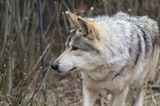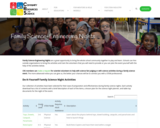
This activity helps students identify the amazing adaptations that animals have.
- Subject:
- Science
- Material Type:
- Activity/Lab
- Author:
- Katie Garrett
- Date Added:
- 09/16/2020

This activity helps students identify the amazing adaptations that animals have.

This article highlights resources related to water from the American Museum of Natural History and at-home activities on ice and water.

This article discusses how to use murals as an interdisciplinary, cooperative activity to blend science, art, and math concepts.

This article lists seven art techniques and four poetry types that can be used to depict and describe the aurora.

This article describes common misconceptions held by elementary students about the history of the polar regions, fossils, and geologic time. The article provides ideas for formative assessment, teaching strategies, and the National Science Education Standards.

This article includes a menu of post-reading activities for use with any nonfiction text. Students spend $50 on their choice of activities.

This lesson is a fun and engaging way for students to learn about idioms. There are activities that incorporate group work, as well as independent work. Students will illustrate their chosen idiom with the literal meaning and then explain the intended meaning in small groups.

Each activity download has a list of contents with a brief description of each of the items, a lesson plan for the science night planner, and table top documents for the night of the event.These could be easily adapted to use in the classroom for preschoolers.

This article provides an overview of orienteering and geocaching as well as suggestions for incorporating these activities into elementary classrooms

Get your students excited about the world around them using Google Earth, Google Maps, and Pollinator Pathmakers. In this video, you’ll learn how these Google applications can help teach your students about different places across the globe and the environment. Watch now to learn more!

This article provides links to inquiry-based, hands-on science lessons that teach elementary students about rocks and minerals. Literacy lessons and integrations are included for each science lesson.

This article provides links to standards-based science and literacy lessons about weather, climate, polar climates, and climate change.

This article highlights science lessons and activities that can help elementary students gain an understanding of the tools and technology involved in polar research. Suggestions for literacy integration are provided, and activities are aligned to national standards.

This article provides links to hands-on science activities that could be used in an festival or informal learning event. National standards correlations are provided.

This article provides links to lessons and units about birds, bird characteristics, and penguins. Ideas for literacy integration are included, and all lessons are aligned to national standards.

This article discusses how the study of weather can meet the NCTM Data Analysis and Probability standard. Links to lessons for grades K-2 and 3-5 are provided.

This article provides an overview of interactive whiteboard technology and ideas for incorporating one into the classroom.

This article highlights lessons and activities for elementary students about the people and cultures of the Arctic region.

This article includes integrated lessons, activities, and ideas for teaching about exploration and polar explorers in the elementary classroom.

This article highlights lessons and activities for elementary students about heat, insulation, and how animals and people stay warm in cold environments.